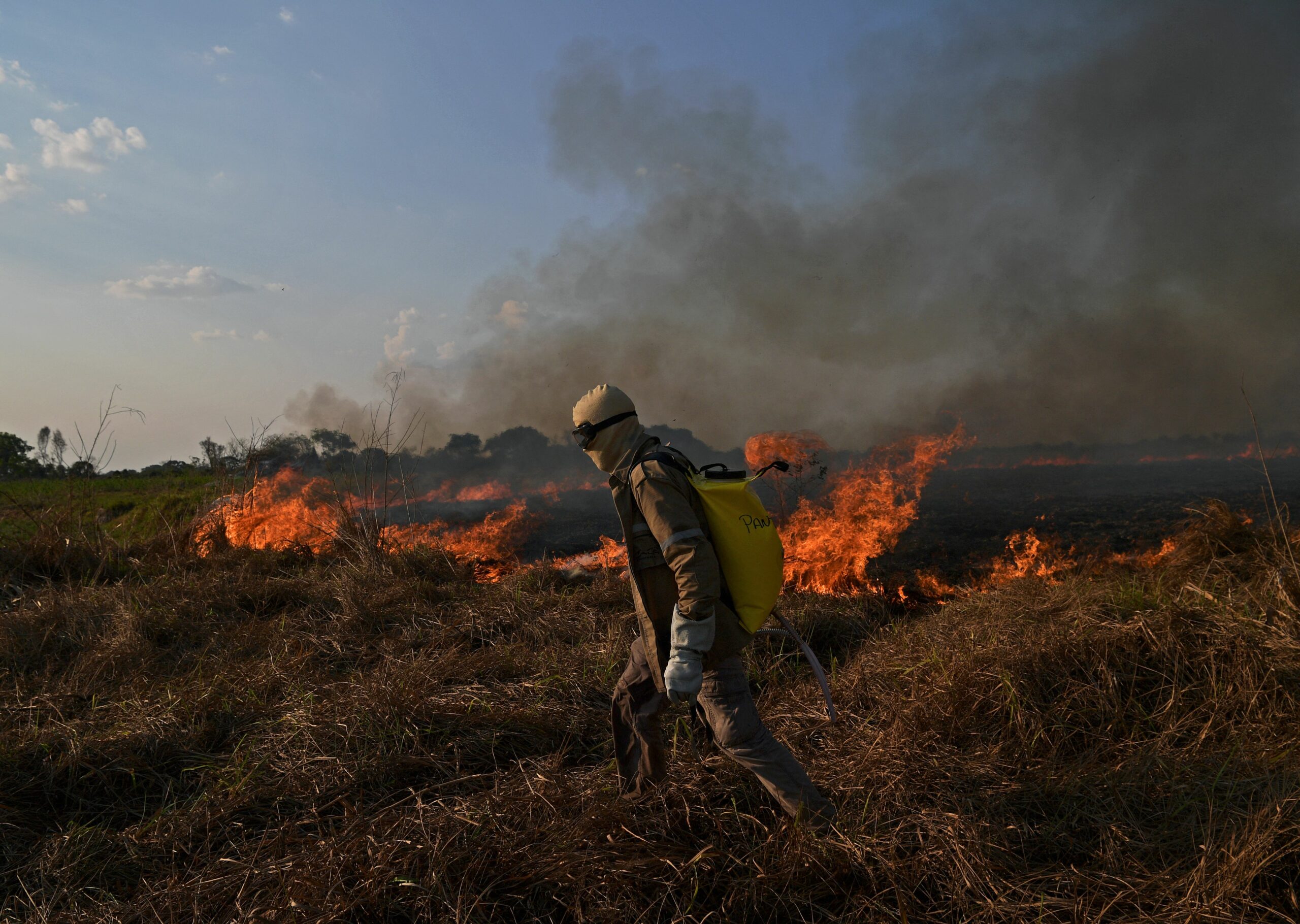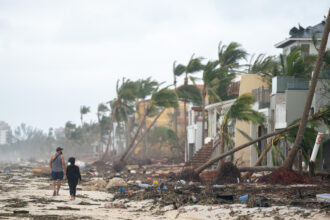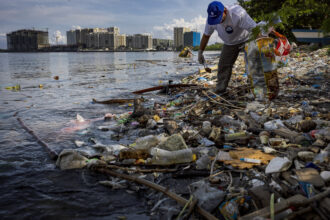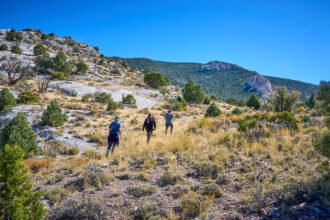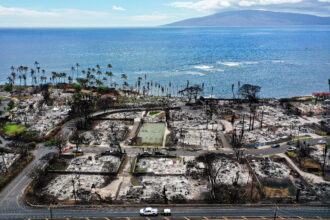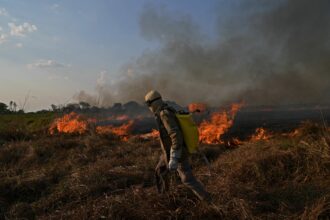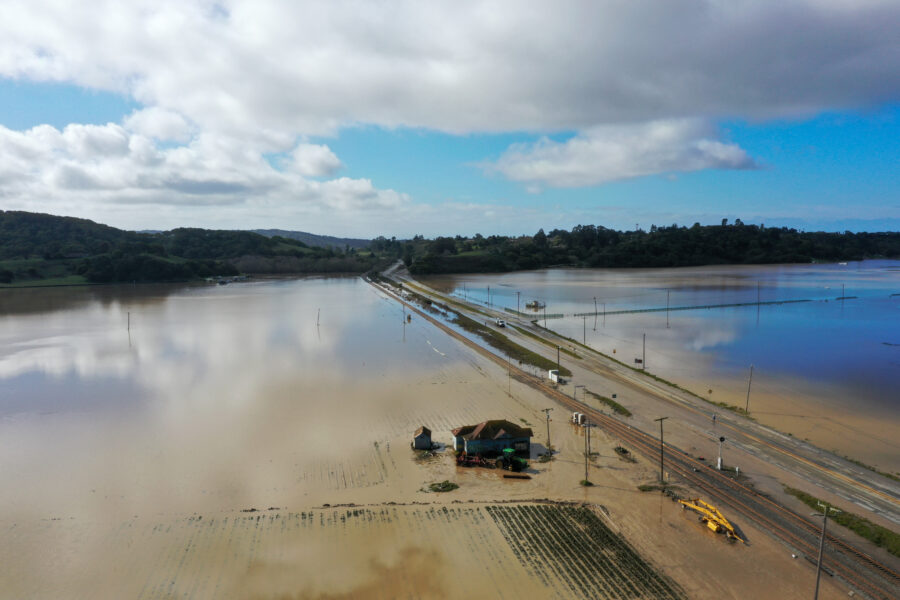Research released this week raises new questions about how much more Earth may warm, or cool, if and when human carbon dioxide emissions zero out. Best estimates to date suggest that the global surface temperature would stabilize within a few decades, but the new paper in the journal Frontiers in Science examines the uncertainties around that conclusion, including how the planet’s key carbon dioxide-absorbing systems, like forests and oceans, will respond.
For example, an August 2023 study showed a declining decadal trend in the amount of carbon dioxide the oceans absorb, and other recent research suggests multiple forest ecosystems, including the all-important Amazon Basin, are starting to emit more carbon then they take up.
Without a more detailed understanding of those complex climate feedbacks, the researchers found there is a one in six chance that Earth’s surface temperature could continue to rise, with a “clear risk of several tenths of a degree of additional warming after net zero CO2,” according to co-author Joeri Rogelj, a climate scientist at Imperial College, London.
“There is a non-negligible chance that global warming will continue after net zero and intensify dangerous climate change,” he said. “Worldwide emissions reduction plans overlook this important risk, which should be urgently addressed at COP28.”
The policymakers at the U.N. climate conference, which begins at the end of the month, need to know what additional actions are needed to reach the Paris Agreement’s goals of limiting warming to 1.5 degrees Celsius or as far below 2 degrees Celsius as possible, said the study’s lead author, Sophia Palazzo Corner, a PhD student at the Center for Environment Policy at Imperial College.
“Anyone who is aspiring to limit global warming needs to have an understanding of how much warming you have from each additional unit of carbon, and also the warming that could possibly occur even after that carbon injection stops,” she said.
Understanding the risks associated with that uncertainty is crucial, not only on the carbon-cutting mitigation side, but also for adaptation to climate impacts, she added, because while the global temperature may level off when there’s no net increase of emissions, other climate changes will go on.
“The famous example is sea level rise, which will continue in response to the warming that we’ve already caused,” she said.
In the past few decades, greenhouse gasses heated the Earth at about the pace that’s been projected by most climate models, but the intensity of the impacts from that warming has exceeded expectations.
Heat and rain extremes and other impacts like mass species die-offs that were projected for late in the century are happening now. A new study in The Lancet medical journal projects a tripling of annual human heat deaths by 2050, and the Nov. 2 United Nations Adaptation Gap Report issued ahead of COP28 shows most countries are not prepared for any of this.
In developing nations hit the hardest by climate impacts already, financing needs are 10-18 times larger than the flows of international public finance, the report stated. The estimated costs of adaptation in developing countries are estimated at $215 billion per year this decade. With a total adaptation finance gap now estimated at$194 billion to $366 billion per year, it will be hard for COP28 to ignore this issue.
Will Global Warming Continue in a Net Zero World?
Global temperatures are regulated by multiple natural processes and feedbacks in the oceans, on land and in the atmosphere that were relatively balanced before the industrial age, but greenhouse emissions, mainly from the burning of fossil fuels, have disrupted those cycles, triggering long-term changes that could persist for centuries after human emissions are reduced to zero.
The main aim of the new study was to assess those disruptions and calculate how they affect Earth’s future temperature, and Palazzo Corner said the team also wanted to evaluate those effects on different timescales, looking at centuries and even millennia. She said the longer time scales are rarely addressed in global climate talks, even though they are critical for small island nations, some of which will drown in rising seas even if COP28 commits to fully phaseout fossil fuels by 2050.
Another study released this week reinforces that point by explaining that the amplified rate of warming in the Arctic—now nearly four times the global average—is another previously unconsidered factor. “Arctic amplification” will lead the world to exceed the 2 degree Celsius of warming since the beginning of the Industrial Age—the least ambitious goal of the Paris Agreement—eight years sooner than it would have otherwise, the study states, leaving negotiators and policy makers at COP28 that much less time to reduce emissions.
Warming melts the reflective polar ice caps, leaving dark water and land. “This reflection is replaced by absorption of solar energy, which drives temperatures even higher,” said Martin Siegert, a co-author of the new paper and an climate researcher and vice chancellor at the University of Exeter.
He said current climate models show that processes like amplified Arctic warming could cause significant planetary heating after humanity reaches net zero emissions, with an estimated 1 in 6 chance this warming could exceed 15 percent of total global warming. This, he said, means that, “If global temperatures have increased by 2 degrees Celsius at the point we reach net zero, the final temperature change could be above 2.3 degrees Celsius.”
Paris Agreement Goal Might Already Be Out of Reach
But the United Nations itself recently reported that the world is not even remotely on track to meet the goals of the Paris Agreement, even without unexpected surprises. A Nov. 14 analysis of national climate plans by the United Nations Framework Convention of Climate shows only “baby steps” toward those targets so far, said Simon Stiell, head of the UN’s climate program.
“This means COP28 must be a clear turning point,” he said in a familiar scientific warning repeated at each annual climate summit. ”Governments must not only agree what stronger climate actions will be taken but also start showing exactly how to deliver them.”
The most recent major global climate report from the Intergovernmental Panel on Climate Change shows that emissions must drop 43 percent (from 2019 levels by 2030 to limit warming to 1.5 degrees Celsius. But the UNFCCC analysis of the emission reduction plans of 195 countries, including updates submitted through late September, shows that they would only lead emissions to start leveling off in 2030, not falling steeply as needed to meet the global climate goal. And the recent Production Gap Report from the United Nations Environmental Program shows that fossil-fuel producing countries plan to up their output to a level that will drive warming past the Paris climate goal.
And emissions are currently still headed in the wrong direction, with a Nov. 15 report from the World Meteorological Organization showing that greenhouse gasses once again reached record levels in 2022. Atmospheric carbon dioxide reached concentrations 50 percent higher than the pre-industrial level for the first time, while other heat trapping pollution like methane and nitrous oxide also reached record highs. The last time CO2 was at a similar level was about 3 to 5 million years ago, when the temperature was 2 to 3 degrees Celsius warmer and sea level 10 to 20 meters higher than today.
Keep Environmental Journalism Alive
ICN provides award-winning climate coverage free of charge and advertising. We rely on donations from readers like you to keep going.
Donate Now“Despite decades of warnings from the scientific community, thousands of pages of reports and dozens of climate conferences, we are still heading in the wrong direction,” said WMO Secretary-General Prof. Petteri Taalas. The current concentrations of greenhouse gases “puts us on the pathway of an increase in temperatures well above the Paris Agreement targets by the end of this century,” he said, adding that means more extreme weather, including intense heat and rainfall, ice melt, sea-level rise and ocean warming and acidification.
“The socioeconomic and environmental costs will soar. We must reduce the consumption of fossil fuels as a matter of urgency,” he said
A growing number of scientists say it’s all but impossible to limit warming to near 1.5 degrees Celsius.
Pioneering climate scientist James Hansen published a paper earlier this month suggesting that that the planet well reach that level of warming within the next few years and break the less ambitious Paris Agreement goal of 2 degrees Celsius sometime in the next few decades, regardless of the decisions made at COP28. His research shows warming is likely to accelerate in the next few decades.
“The 1.5 goal is long dead and not possible,” added Kevin Trenberth, distinguished professor emeritus with the National Center for Atmospheric Research. “And net zero may be a nice goal but it is not attainable, so much of this seems academic. Isn’t it wonderful that a large bunch of scientists can write science fiction, conjure up a mythical net zero and write a mystery about what could happen.”

